BONZAI:
You were just playing this Gibson, which you referred to as
a "Frank's guitar." Is this a special model?
ZAPPA:
It's funny because it says Gibson, but I believe from the stories
that Frank told that someone had copied a Gibson SG. Frank liked
the feel of it and bought it. It's got some special detail work
that was never offered in a Gibson. But Frank's guitars were
all unique in that they had extremely low action, and they had
specialized electronics. That guitar has a pre-amp that has
18dB more output than a normal guitar. Frank would use the guitar
to overdrive his amplifiers as opposed to using a pre-amp gain
stage in an amplifier. He used effects, as well, but he would
rely more on the power section from the amp and use the guitar
for the gain and tonal changes. He didn't play particularly
hard, so he liked having the dynamic range. With the extra output
coming from the guitar, you can really articulate dynamics.
He was very astute when it came to EQ in the signal path. He
had the electronics built into his guitars so that he would
be able to equalize his sound over the band. He didn't necessarily
have one signature tone. He adjusted it to fit the moment. He
was essentially mixing from the stage, creating guitar tones
that were unique but would cut through the arrangement that
he created. He knew the range of the instruments in the accompaniment
and the tones that they were creating, and he balanced his guitar
tone to smoothly sit above everything. That's why his live recordings
always sounded so good. They are consistently good from tape
to tape, which is very difficult to achieve.
BONZAI:
I was listening to you trying to play a part that Frank wrote.
Is that in preparation for your tour?
 ZAPPA:
Yes, we are preparing for the "Zappa Plays Zappa"
tour. It's the first official event that we have been able to
put together, where we are actually going to go out and play
Frank's music. We will have other elements as well. There is
a documentary film abut Frank's work as a composer that will
be excerpted for the 25-minute opening of the concert as well
as some rare FZ concert footage. The goal is to have a new audience
enjoy Frank's music, but hear it from an unfiltered perspective.
When you see the movie and hear him talk about the music and
other people talk about his serious music, the classical music,
some of which was played by the rock bands through the years
- I think it does so much more than we could ever say. We are
very excited about presenting the music to younger generations.
ZAPPA:
Yes, we are preparing for the "Zappa Plays Zappa"
tour. It's the first official event that we have been able to
put together, where we are actually going to go out and play
Frank's music. We will have other elements as well. There is
a documentary film abut Frank's work as a composer that will
be excerpted for the 25-minute opening of the concert as well
as some rare FZ concert footage. The goal is to have a new audience
enjoy Frank's music, but hear it from an unfiltered perspective.
When you see the movie and hear him talk about the music and
other people talk about his serious music, the classical music,
some of which was played by the rock bands through the years
- I think it does so much more than we could ever say. We are
very excited about presenting the music to younger generations.
BONZAI:
Will you be entirely faithful to the original compositions?
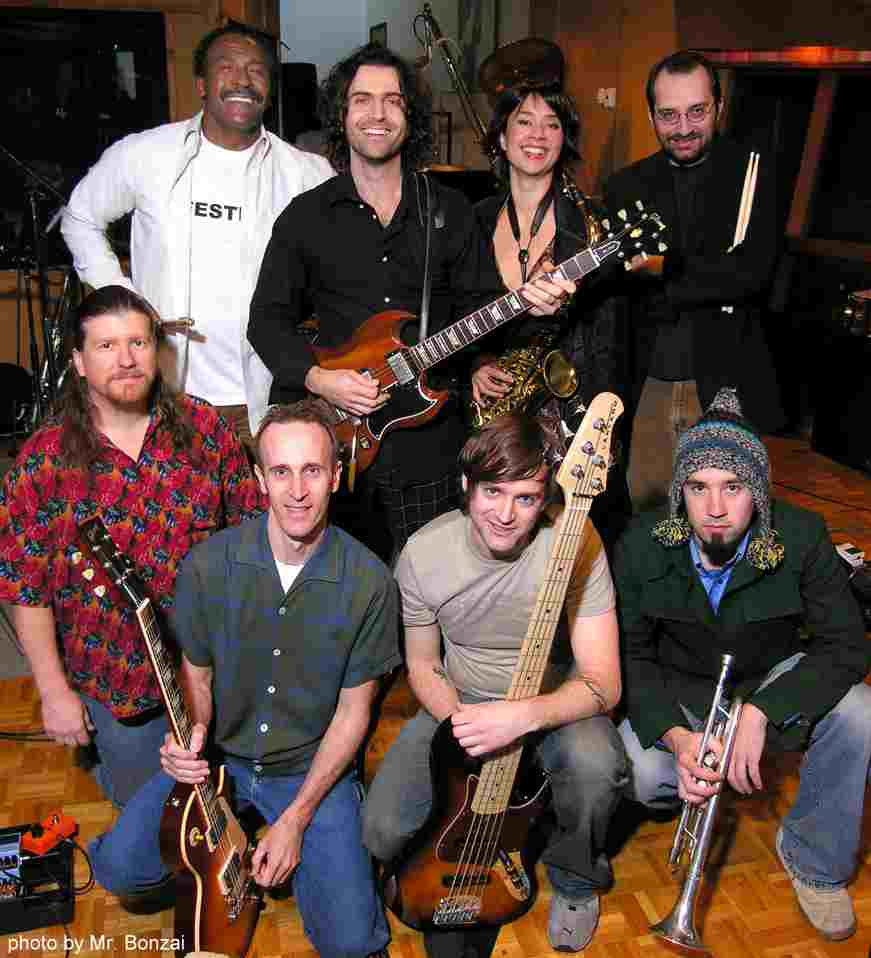 ZAPPA:
Frank wrote all of his music. It sounds the way it does because
that was his intent. He had the ability to hear music in his
head and write it down on paper, then teach it to other musicians.
The sound is not the result of the players; it's result of the
composer. He certainly had exceptional musicians articulating
his music but that's merely execution. He hired people who were
at the top of their skill level, and trained them to do extraordinary
things under his baton. He would always allow them to have some
space in the show to present what he called, "Body Commercials."
That was his terminology for solos. If someone was capable of
something unique he would always find a way to expose and exploit
it. He wrote a lot of incredible compositions that are extremely
challenging, but with beautiful melodies and really interesting
rhythms.
ZAPPA:
Frank wrote all of his music. It sounds the way it does because
that was his intent. He had the ability to hear music in his
head and write it down on paper, then teach it to other musicians.
The sound is not the result of the players; it's result of the
composer. He certainly had exceptional musicians articulating
his music but that's merely execution. He hired people who were
at the top of their skill level, and trained them to do extraordinary
things under his baton. He would always allow them to have some
space in the show to present what he called, "Body Commercials."
That was his terminology for solos. If someone was capable of
something unique he would always find a way to expose and exploit
it. He wrote a lot of incredible compositions that are extremely
challenging, but with beautiful melodies and really interesting
rhythms.
When
you referred to what I was just playing, I was learning a part
from "Inca Roads" that was a keyboard line, and was
also doubled on marimba. It was never intended to be played
on guitar because the interval stretches are not set up for
guitar. But it's great to learn stuff like that because it makes
you a better player, and it gives you an entirely different
look at the instrument. It's been a great challenge for me to
learn hard interludes of songs like that.
You
mentioned that when you asked Frank back in 1985 if he had ever
witnessed a miracle that he replied that one time, one of his
bands played several bars correctly from his composition "The
Black Page." That is a song that we are going to learn
as well, and it is definitely not easy on guitar. Steve Vai
did a great job with that when he was in Frank's band, but it's
very hard to articulate Frank's complex rhythms and the melodies
that go with them.
BONZAI:
Let's talk about your new album, Go With What You Know.
Did you do all the engineering?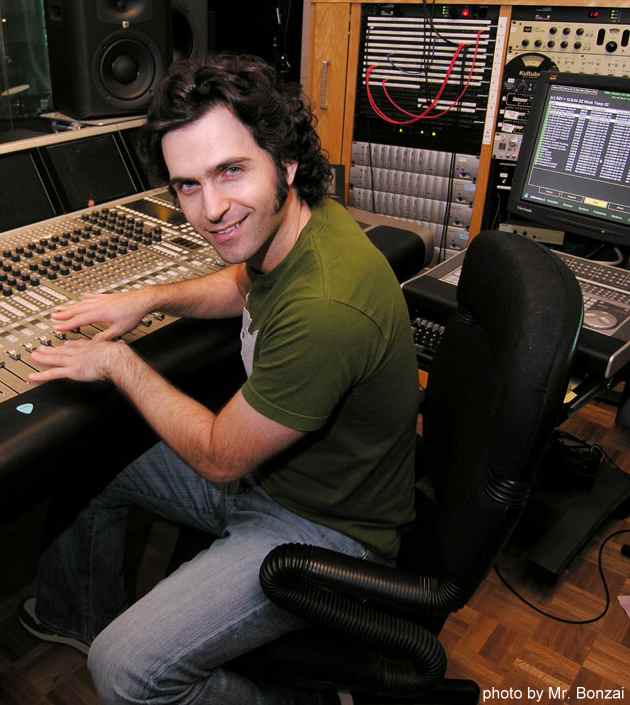
ZAPPA:
Yes, I did, except for "Peaches en Regalia," which
was a unique situation. I went to the master tapes from Frank's
Hot Rats album. We were getting ready to do a project
with that album and listened to the master tapes for the first
time. They've been sitting in boxes for a long time - the last
time Frank used them was for some remixing on CD in the mid-80s.
BONZAI:
I heard the tape when your were soloing material and listening
and it was amazing how Frank got those sounds, with tape speed
changes and such, all done in the pre-digital world.
ZAPPA:
What was so impressive was that the piece of music itself is
a great composition and the arrangement is unique. What he was
able to accomplish using that studio technology was to take
instruments and embellish their personalities in very subtle
ways. You wouldn't necessarily know what was being done unless
you soloed the individual tracks.
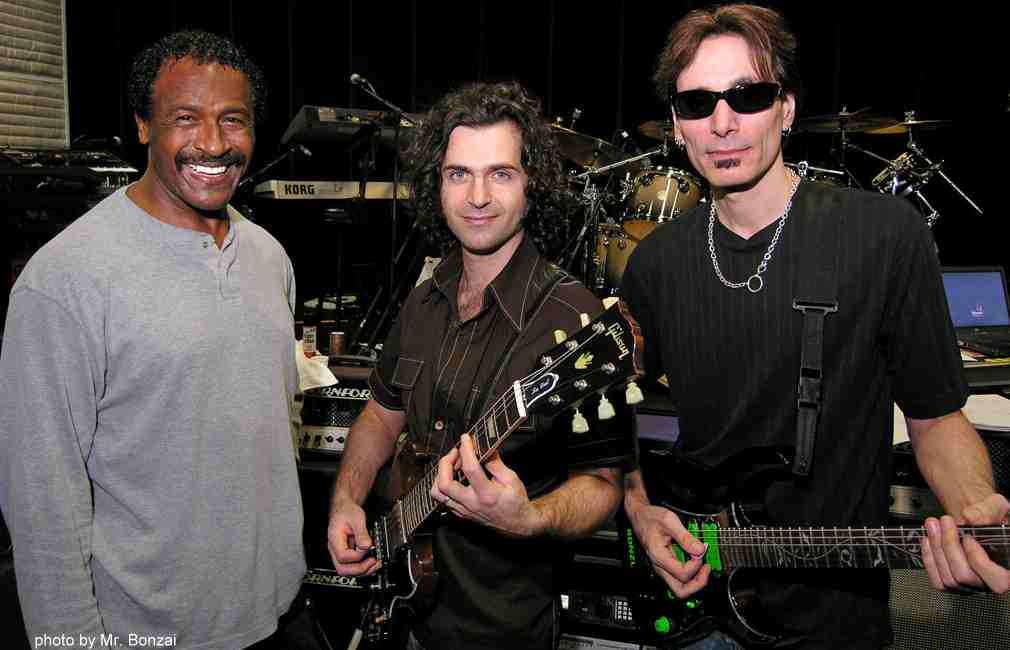 One
example was the bass guitar. The initial melody in the first
verse has multiple bass parts that were recorded at a slower
speed so that it could be pitched up when you heard it at normal
speed. It enabled Frank to have this sound in the right pitch
register, but the tone had this rubbery, lower smooth character.
But
it doesn't really exist in the real world. It's a unique sound.
Now we are used to synthesizers and you might think it must
have been a synthesizer, but it was 1969 and there wasn't anything
invented that sounded like that. He's making up a sound that
doesn't exist.
One
example was the bass guitar. The initial melody in the first
verse has multiple bass parts that were recorded at a slower
speed so that it could be pitched up when you heard it at normal
speed. It enabled Frank to have this sound in the right pitch
register, but the tone had this rubbery, lower smooth character.
But
it doesn't really exist in the real world. It's a unique sound.
Now we are used to synthesizers and you might think it must
have been a synthesizer, but it was 1969 and there wasn't anything
invented that sounded like that. He's making up a sound that
doesn't exist.
Another
example -- there is one melody line that is clearly played on
a saxophone. There is an upper register, and you know it's there
because of the way it sits in the mix, but you can't be sure
what it is. He's altered the range of that instrument by recording
at a slower speed and making it able to play this part an octave
higher, which is well out of the range of the instrument. It
had a unique sound. Very different than merely substituting
an instrument that can play in that range. If you took that
out of the arrangement, that melody wouldn't sound nearly as
interesting.
He
had all these ideas about how to make the music sound unique
and special and he was able to use technology to make that happen.
What I did with the version for my album - I wanted it to sound
like it did in 1969, add elements that are modern, but to take
a similar approach to Frank. I thought, well what can I do in
the studio now that's technologically equivalent to that? What
kind of instrument can I modify using technology and make it
sound like something other than what it is? I took acoustic
guitar and I recorded multiple parts and then I cut them all
up on the beat, on each transient, and then I reversed them
so I was ble to alter the sound. Acoustic guitar has a lot of
transient information, so when you turn it around backwards,
it sounds like a bowed instrument. But it also has an eerie
backwards quality. The result is a mysterious orchestral sound.
 BONZAI:
Hmm -- so you didn't use backwards tape?
BONZAI:
Hmm -- so you didn't use backwards tape?
ZAPPA:
No. When you run something backwards you can do it in several
ways. With a tape machine you flip the tape over and play it
backwards and then you record it again on a different track
and flip the tape back over. With a computer you have a couple
of options. You can take something and flip it backwards, but
if you want to play a specific part that has to work with the
music playing forwards, and be in time - it's hard to learn
to play something backwards which you can then turn forwards.
The way you get around that in a computer is you can prep all
the transients and it will reverse all of those notes in place.
It's not taking the whole phrase and reversing; it is taking
each note and reversing it. When you play it forwards it is
playing in time with what you want, each note, but it is swelling
up into it. It's a confusing thing that will bend a lot of people's
minds when they try to figure it out.
BONZAI:
Are your new elements throughout the whole piece?
ZAPPA:
They make several appearances, but I am also playing all of
the main melody lines on guitar. I was trying to use the guitar
to mimic the instruments that were originally played. I took
out the original instruments and replaced them with my guitar
parts. Another interesting thing - Frank's guitar solo is doubled
by a flute on the record. It is still doubled by a flute, but
I also learned the guitar solo and played that. So you hear
Frank on the left side and me on the right side playing in unison,
which is slightly equivalent to Natalie Cole singing with her
father, Nat King Cole. That is also a good example of what might
be happening on this tour.
BONZAI:
You open the album with your only vocal track, "Love Ride."
It's a very Summer fun Pop song. Have you been taking vocal
lessons?
ZAPPA:
I haven't, and I would never say I am a singer, but I can sing
well enough to harmonize with myself and make something interesting
on occasion.
BONZAI:
Who recorded the jet engines that open the album?
ZAPPA:
That's using a sample from a NASA rocket plane that I found
on a sound library I own, but I altered it and beefed it up
with some sub-information.
BONZAI:
Do you have to pay royalties to NASA?
ZAPPA:
I don't think so, but I heard they're getting into the record
business. I think they're negotiating with Michael Jackson.
BONZAI:
How many tracks did you have in that song?
ZAPPA:
That song has a lot of tracks, over 50, but that's because in
my working process in Nuendo I like to separate things out.
Even if a track only comes in for 2 seconds in the song, it
has its own track. In an analog world you would be track-sharing
a lot of stuff, but I could fit it on 24 tracks.
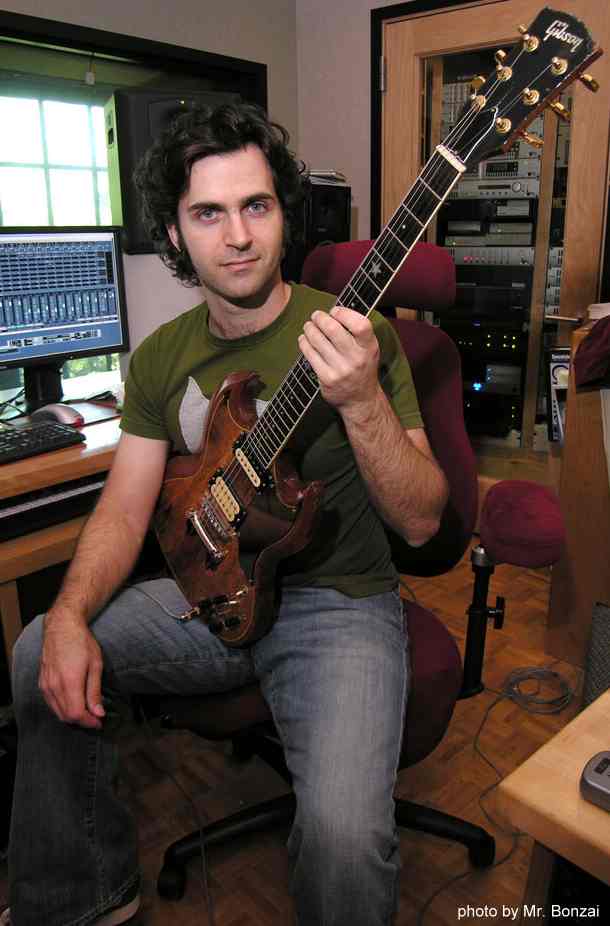 BONZAI:
The second track is virtually a one minute and thirty second
guitar solo called "Noitpure."
BONZAI:
The second track is virtually a one minute and thirty second
guitar solo called "Noitpure."
ZAPPA:
People are going to have to think about what that means.
BONZAI:
The third track reminded me of "Frankenstein" by Edgar
Winter in some sort of Chinese marketplace, from heavy guitar
to playful sounds.
ZAPPA:
There's a weird little sitar moment. That one is titled "Fighty
Bitey," which was the name of a cat with a feisty personality
we had for 21 years, and recently passed away.
BONZAI:
And then we have "CC $," with a whoop-whoop sound
I thought was a synthesizer.
ZAPPA:
Well, that sound comes from a TC Electronics effects unit, FireworX
- basically a noise generator, like a feedback loop. Just that
one sound inspired the whole song. I had recorded that little
whoop-whoop sound and asked Joe Travers to play drums to it.
Then I had my friend Blues Saraceno play acoustic guitar on
it. After that I created all the other stuff on top.
BONZAI:
So there are real drums on the album, played by Joe Travers,
who also happens to be your "Vault Meister," and is
archiving all of Frank's tapes.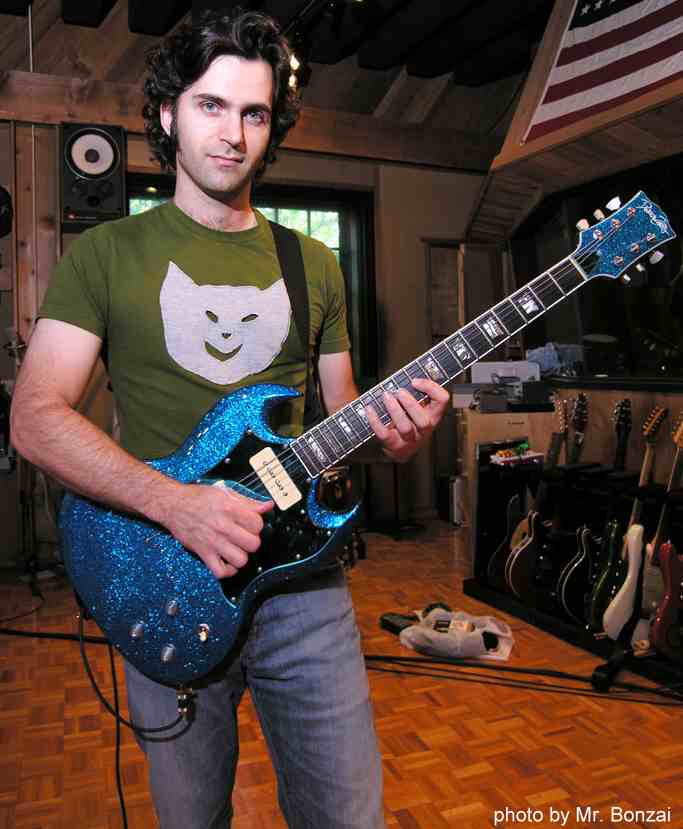
ZAPPA:
Yes, and he will also be playing drums on our tour.
BONZAI:
Is there anyone else playing on the album?
ZAPPA:
I had two guitar solo spots open so I invited my friend TJ Helmercih
to play a crazy solo on "The Grind," and I have a
guitar duel with my friend Blues Saraceno on the song "Thunder
Pimp." Pete Griffin plays bass on "All Roads Lead
to Inca." He's playing bass on tour with us and Aaron Arntz,
our touring keyboardist, also plays on that track. Mark Meadows
plays bass on the final track, "Audio Movie," but
I did everything else.
BONZAI:
The final track reminded me of science fiction sounds, Hawaiian
music - is your guitar slack?
ZAPPA:
No, the weirdo guitar melody that starts and ends the song is
a fretless guitar. There's a little bit of a jungle rhythm background
sound going on that might remind you of Hawaii. That song itself
sort of inspired the rest of the record to have this continuity
with sound effects. The record evolved like one long audio movie,
starting with the feeling that you are being taken away on a
space ship and it ends with the ship landing, with a number
of departure points along the way - being kidnapped in a van,
going underwater, with lots of things happening at the beginnings
and endings of songs that set a certain tone.
BONZAI:
As an album, the elements jump here and there, unlike many albums
which are put together to create one mood only. Do you think
this is an album that people could make love to?
ZAPPA:
I'm sure they could. I don't know if they will want to, though.
With popular music, record companies try so hard to market it
as one specific thing, so most records aren't allowed to have
anything that deviates from what the hit single is supposed
to be. I like Beatles' records or Led Zeppelin records that
show and embrace different influences. The media today would
call that "unfocused." I find that to be extremely
irritating.
For
me, I just wanted my record to be a listening experience. A
ride, you go somewhere from the first song to the last song.
It's definitely rock guitar oriented, but there are acoustic
elements and electronic elements that I haven't touched on in
my music before. Mainly, it's because when we redid the studio,
I had to force myself to become computer literate and deal with
it. I tried to use technology as an instrument on this record,
and it really did help form the project. Once you know how to
use the technology, you can hear something in your head and
then make it happen. It would be very difficult for me to explain
to someone how to make these sounds. It gave me the opportunity
to use a lot of sounds which I could adapt and mutilate, and
twist and turn into whatever I wanted. Why not have fun and
play around with it? And that's what I did.
ZAPPA
STUDIO TECHNICAL TOPICS
BONZAI:
What do we have here in the Zappa studio, the new Utility Muffin
Research Kitchen?
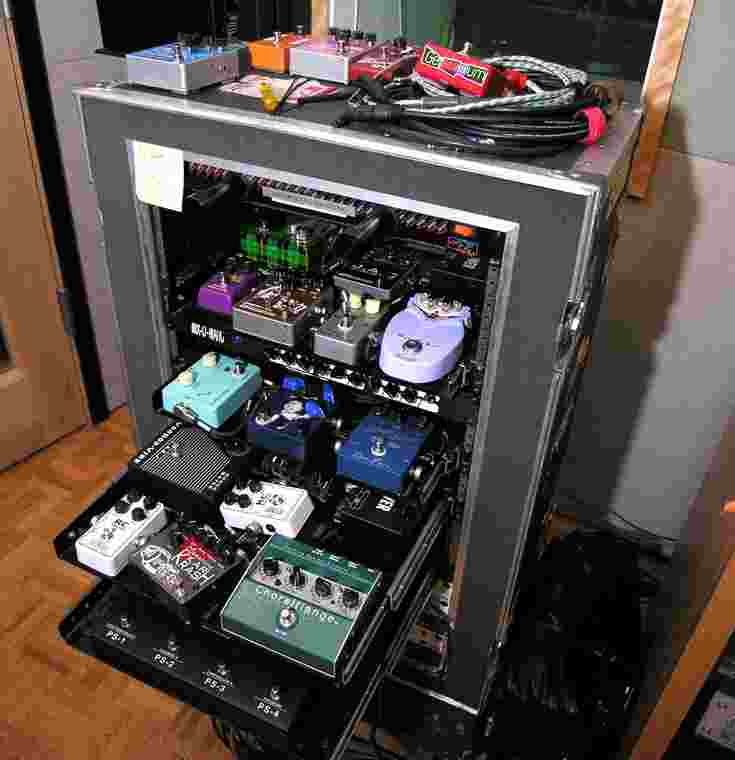 ZAP
ZAP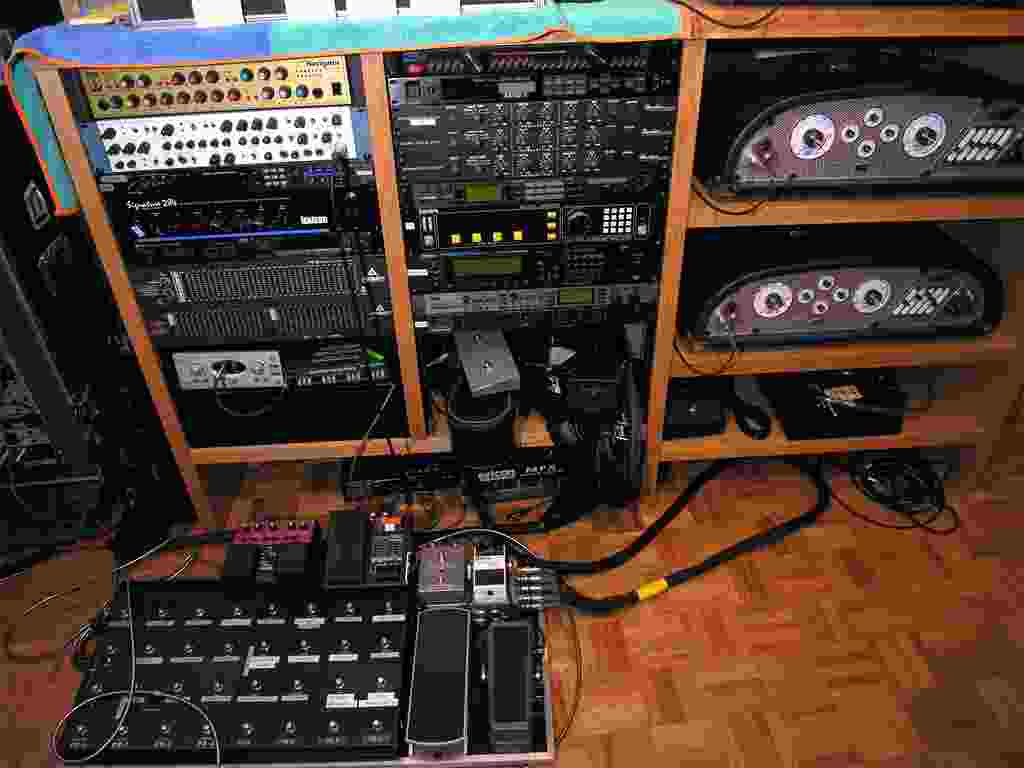 PA:
Here in the control room we have JBL speakers, which we discovered
were the right monitors for this space. The big recording room
has always been a great sounding room, with two live chambers.
One chamber is big enough to record in, and the other one is
narrow, but longer and taller, giving you natural ambient reverb.
But the control room is quite a bit different now - it's got
a higher ceiling and the colors are good for long working hours.
Before, it was sort of a burlap look with a dark ceiling. The
main console is a Euphonix System 5.
PA:
Here in the control room we have JBL speakers, which we discovered
were the right monitors for this space. The big recording room
has always been a great sounding room, with two live chambers.
One chamber is big enough to record in, and the other one is
narrow, but longer and taller, giving you natural ambient reverb.
But the control room is quite a bit different now - it's got
a higher ceiling and the colors are good for long working hours.
Before, it was sort of a burlap look with a dark ceiling. The
main console is a Euphonix System 5.
BONZAI:
Was it sad to see Frank's old console leave?
ZAPPA:
Well, the studio has evolved quite a bit since its original
design. The original console was a Harrison that was heavily
modified. Sort of an API style, and that was in here from 1980
until about 1990. Then we got the Neve V series console and
Frank liked it because at the time it gave him opportunities
to use his Synclavier and have multiple tracks with automation.
It was before the digital console era; he would have loved all
the possibilities that exist now. In the dormant years of the
studio before we rebuilt it, nothing was going on for 11 years.
BONZAI:
But you had a small room for your own work, didn't you?
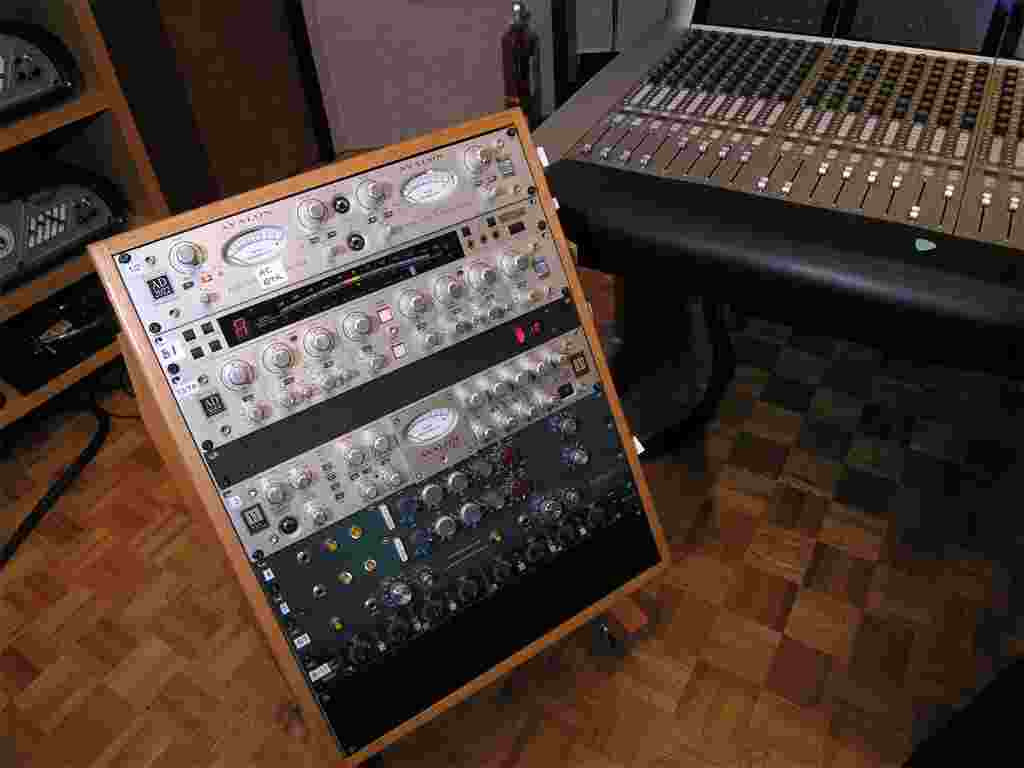 ZAPPA:
Yes, I had my own room for my projects, I was studying engineering,
and experimenting. This room was in disrepair, and when gear
isn't used, the gremlins usually like to come in and modify
it for you.
ZAPPA:
Yes, I had my own room for my projects, I was studying engineering,
and experimenting. This room was in disrepair, and when gear
isn't used, the gremlins usually like to come in and modify
it for you.
BONZAI:
What is your recording medium these days?
ZAPPA:
It depends, most of the time for a brand new session, my preference
is to use the Euphonix R-1 hard disk recording system and then
bump that over to Nuendo. But, we have also refurbished some
of the analog machines and I'm looking forward to using them,
as well, and then transferring over to the R-1 or the Nuendo.
The R-1 is a great sounding digital recorder, but it doesn't
have fantastic editing capabilities as of yet. Nuendo is also
a great sounding digital recorder and has fantastic editing.
BONZAI:
What analog machines do you have?
ZAPPA:
We have a 24-track Studer A80, a 2-track A80, and two Ampex
machines, one 4-track and another 2-track. We have various head
stacks for the machines. We even have an unusual five-track
headstack that was a special invention from the 50s, created
by Paul Buff.
BONZAI:
You also recently refurbished Frank's microphone collection?
ZAPPA:
Yes, we have a nice vintage mike selection, but for years we
haven't had the opportunity use them because we didn't have
the right power supplies and I didn't want to ruin them in any
way by experimenting. It was fortuitous to have Toni Fishman
and Joe Sanborn here, from Telefunken North America, to solve
our problems. Among others, we have three Telefunken U47s, four
Neumann M49s, a matched pair of Neumann M50s, circa 1950, four
AKG C24s, circa 1960, and a new U47 built by Toni's company.
Now we have a lot of options. It all comes down to the microphones
as to what gives you the sound of your record. The better the
microphones, the better the sound. I'm really looking forward
to using those mikes on all the new projects
BONZAI:
What is your typical guitar signal chain?
ZAPPA:
What I like the most is to use these Neve 1073 modules. I use
two microphones on the cabinets. I have a stereo guitar rig
now, so I've been using a Shure SM-57 and a Sennheiser 421,
making sure that they are in phase on each cabinet. The 57s
usually go through the 1073s, and I also have this Neve 1272
stereo mike pre that we put the 421s through. Sometimes I'll
use the console mike pre's, and sometimes I will use these Avalon
mike pre's. The console and the Avalon mike pres are clean,
so for a distorted guitar, I will sometimes want it to have
a little bit more of an edge, and the Neve can give me the edge.
I also have some API mic pres that I am fixing up, because they
tend to overload right now. I am still looking for the ideal
chain, but things are sounding good.